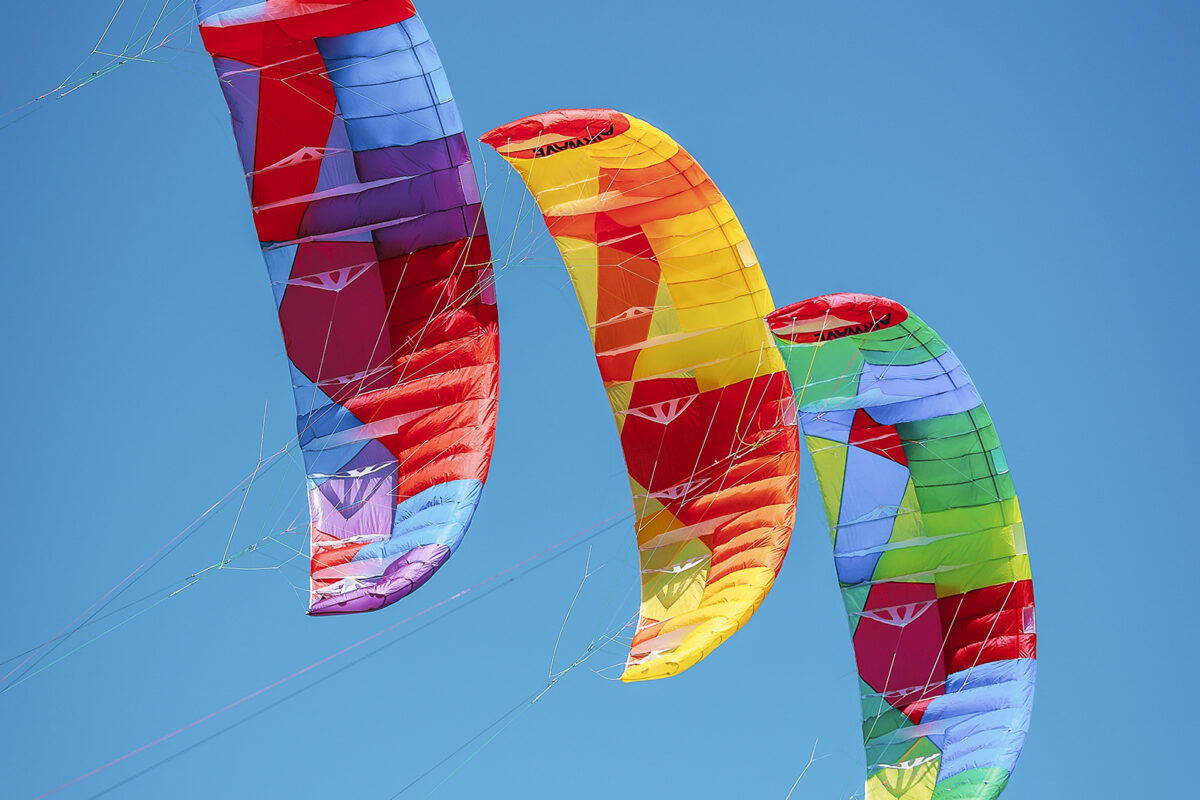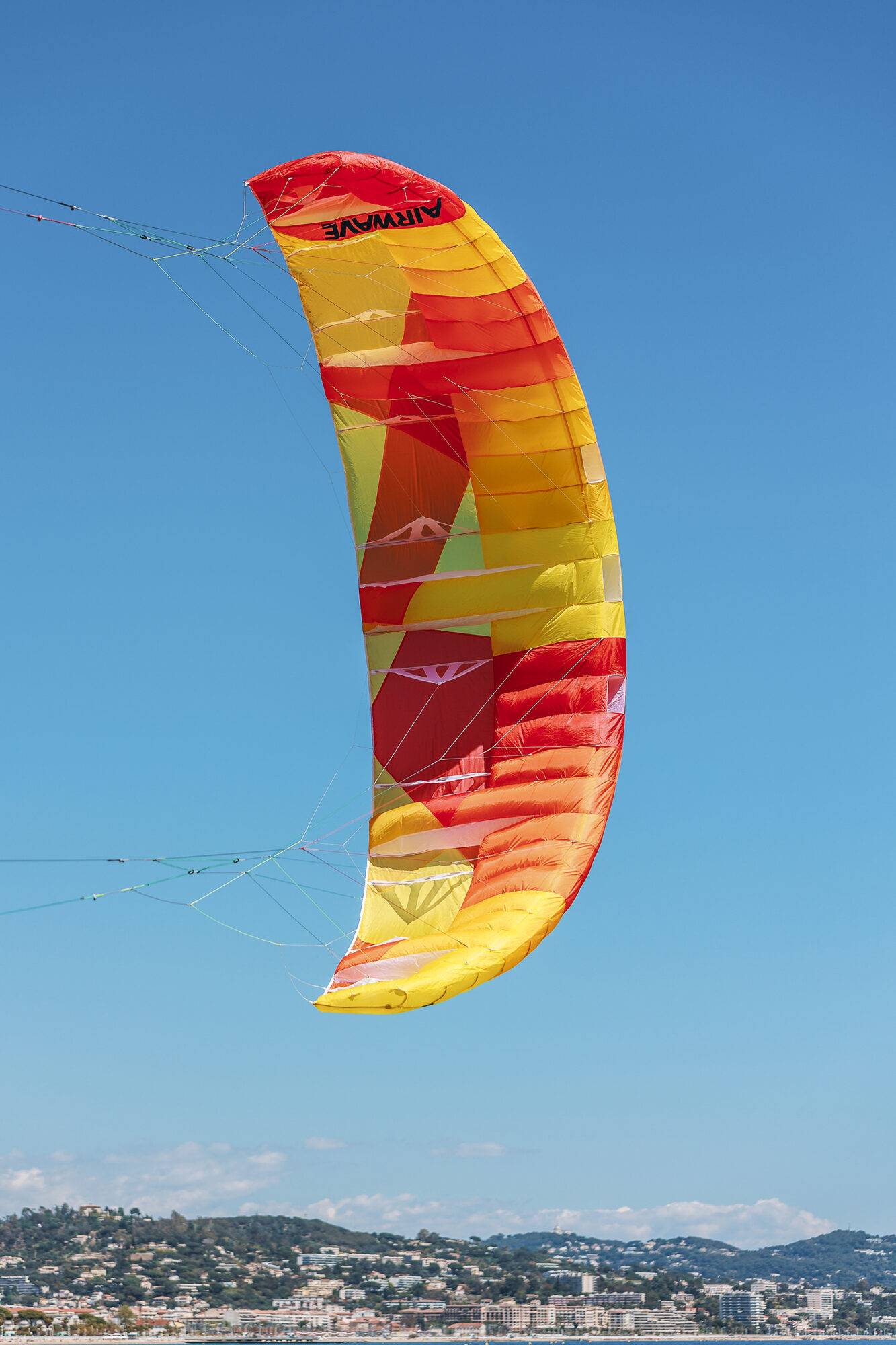Tech and Materials: Airwave Alma
Airwave have come up with a foil kite that is radically different to anything produced before. We spoke to Designer Tom Lolies about the tech and inspiration behind the new Alma kite.
When you purchase gear through links on our site, we may earn a small commission. Here’s why you can trust our tests and our affiliate partner.

Airwave have come up with a foil kite that is radically different to anything produced before. We spoke to Designer Tom Lolies about the tech and inspiration behind the new Alma kite.
Firstly, can you tell us what style of rider you’ve produced the Alma for?
The Alma is intended to perform in every style and all conditions, but it really shines the most when hydrofoiling in moderate to strong winds. Thanks to a tight loop, smooth power generation, great drift and good upwind/downwind performance, the Alma really transformed my foiling style. It suits hydrofoil freestyle “carving” riders particularly well, with or without straps. It has good Big Air freestyle capabilities and sizes 4 and 6m are really good for megaloops, maybe even doubles! Finally, the easy relaunch, clear bar feedback, strong materials and lightweight design make it a good kite for beginners learning to kitesurf or twintip riders learning to hydrofoil.
Talk us through its unique technology and why you’re so excited about it.
The main drawback of single-skin and single-skin hybrid kites was the constant flutter of the trailing edge when depowered. This resulted in an unpleasant feel in the bar and a very low upwind, pop and hangtime performance. Our design is a cross-over between LEI and single skin. The five full chord inflated closed cells work just like the five struts of an LEI kite. Here, the struts are inflated by the ram-air intakes and made rigid with long high-density nylon rods. Thus the kite is rigid enough so that the top surface does not flutter and the whole canopy stays solid and stable even in extremely gusty and strong winds.

How did the idea come about, and why the choice of name?!
The initial project was to make a simple kite just for hydrofoil cruising in light winds. For that purpose, I started extending my simulation software, ALULA, to single-skin kites, to better understand the physics of these kites. Then the first prototype came and Maxime Nocher (hydrofoil world champion and test rider for the Alma project) and I were incredibly excited. We realized that hybrid single-skin technology still had a huge potential for improvement. What if we could make a kite with similar performance compared to the ultra-light LEI kites without the incredibly expensive cloth and without any inflatable bladders, but even lighter and with the nice bar feel of a foil kite? Alma means soul in Spanish. It suits the kite well in my opinion, referring to the soft bar pressure and smooth harness feedback. Do what you please and the kite will follow!
How does it compare to your Koala kite? What advantages does it have in comparison?
We worked extensively on improving the upwind performance of the kite. The Koala still has better upwind angles, but the Alma is not far behind, and has better downwind capabilities. Another key difference lies in the handling, where the turn is much, much faster. The combination of good performance and tight turn radius makes it good even for Big Air and megaloops. Airwave team rider Maxime Desjardins (GKA Hydrofoil Freestyle World Vice-Champion) thinks it is suitable for double loops, so stay tuned for the first ever double loop with a foil kite! Also, while the Koala has a more progressive depower – you have to let the kite fly towards the side of the wind window to reduce the pull – the Alma features an immediate depower when you release the bar, which feels similar to a tube kite. The Alma is also lighter than the Koala making it great for difficult conditions but also aggressive surfing. The drift is impressive! We are happy to say that the Alma keeps the nice bar feel of the Koala, and the uncompromising stability.
Are the materials used the same as the Koala or have you implemented something different?
Yes, we used similar materials except for the nylon rods and bridle lines. Our experience shows that the Koala is very durable and this is why we decided to keep the same overall construction. The new line materials are very pleasant to use as they do not tangle easily. It only takes about 30 seconds to unpack and set up the kite!
How did you go about testing the prototypes to arrive at the final product?
I first spend quite a lot of time behind the computer running simulations to try to improve the performance of the kite and fix the issues observed in the previous prototype. For instance a lack of depower, an undesired crease on the sail, and so on. Then I send the design to the factory and we test it with Maxime Nocher. Through his years of experience he has the ability to tell the difference between incredibly small trim adjustments, which made our collaboration very efficient. My challenge was to reproduce the positive effects of a given trim change to try and reproduce them in the simulation program to see if we could optimize even further. It is a unique opportunity to be a design engineer and also to get out on the water with one of the best riders in the world for the test sessions!
We use a relatively small number of prototypes. In fact, using simulation and line trim I really try to get the most out of every proto. Over the course of a year, we made only seven prototypes. However, on top of the thousands of CPU hours to optimize the design in ALULA before it was built, a lot of line trim, cutting and sewing was involved once we received it!
How would you reassure hardened LEI riders who might be fearful to try this new technology?
Some riders do not really want to hear about foil kites mainly because they don’t want to have to deal with the bridles and pulleys and the different launch technique. To these riders, I would say that it will only take one session to get adjusted to nearly everything you need to know about foil kites. The Alma features a very simple line layout making it a great transition from LEI to flexible kite. It is actually much easier to deal with a few tangled lines from time to time than leaking bladders! If riders are worried about the cost side of things, foil kites used to be much more expensive than LEI’s but that is not the case anymore. Lastly I would say the Alma tech gives you great performance and yet much simpler construction.
What feedback have you had so far from the public? Winter is still a way off, but can you see the Alma being popular amongst snowkiters?
Yes! Airwave team rider Jerome Josserand tested the Alma on the snow, and it performs really well. The first feedback from early customers is very exciting. The Alma proves to be the best performing single-skin foil kite and is already successful especially among hydrofoil riders. But this technology is only just starting, and I can’t wait to see where this will go! ■
You can get the latest goodness from the world of kiteboarding by subscribing to our print edition. You'll get 5 packed issues, plus a free tee and free digital access. And you'll be directly helping with our sustainability efforts too!
Check it out now